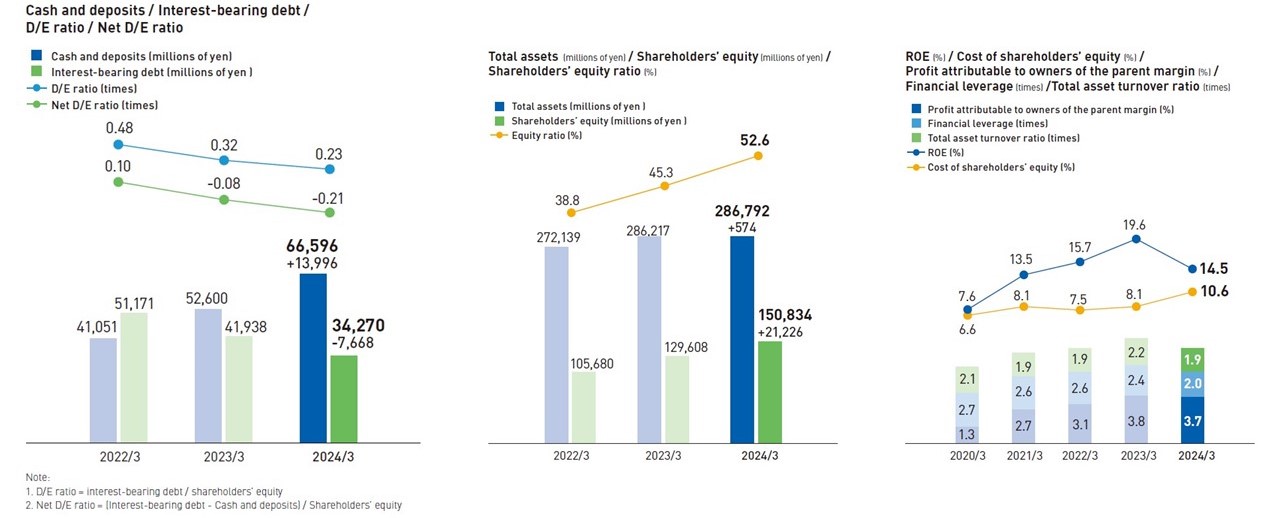For the fiscal year ended March 31, 2024, the Group reported net sales of ¥542.6 billion, down ¥65.4 billion from the previous year, and operating income of ¥25.8 billion, down ¥6.4 billion from the previous year.
There are three main factors for the decrease in revenues. The first is a ¥22.8 billion decrease at EXCEL CO., LTD. caused by a reduction in transactions with a specific large-lot customers, and the second is a ¥19.6 billion decrease due to the absence of spot demand in the electronic components business. These particular factors account for two-thirds of the total decrease, while the remaining third is attributable to the impact of inventory adjustments by customers, etc., resulting in a decrease of ¥22.8 billion. At the same time, despite a ¥5.2 billion decrease due to these particular factors and a ¥2.8 billion decrease from lower sales as a result of the aforementioned inventory adjustments, SG&A expenses decreased by ¥1.6 billion, resulting in a ¥6.4 billion decrease in operating income.
Investor RelationsInvestor Relations

- IR
- IR Library
- Integrated Report (Message from the CFO)
Integrated Report (Message from the CFO)

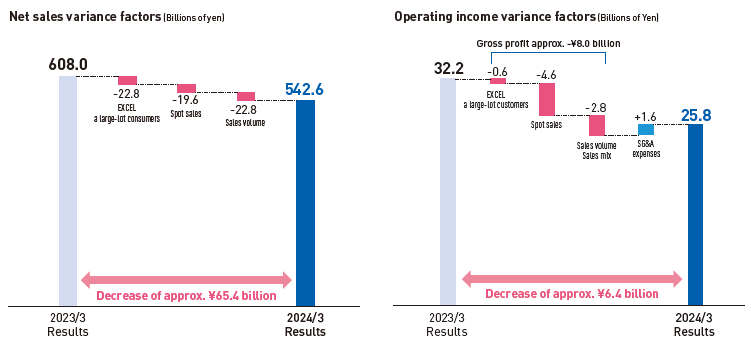
Looking at the results by company, Kaga Electronics suffered a decline in both net sales and operating income due to the significant impact of the absence of spot demand, but both the gross profit margin and operating income margin remained roughly on the same level from the previous year, confirming that the Company was able to maintain profitability.
At first glance, KAGA FEI CO., Ltd.’s operating income seems to have declined significantly, but we believe that this was largely due to extraordinary one-time factors, including the absence of spot demand, a change in the allocation of head office expenses from the fiscal year ended March 31, 2024, and an increase in the provision of allowance for doubtful accounts associated with specific customers, and that the company has steadily developed a highly profitable structure since the M&A.
Despite a decline in sales to a large-lot customers, EXCEL enhanced its profitability by improving its sales mix, and its profits did not decline as much as its net sales, with both gross profit margin and operating income margin improving significantly.
We believe that our consolidated gross profit margin, although slightly higher than in the previous year, is evidence of our continued maintenance of sustainable earnings power.
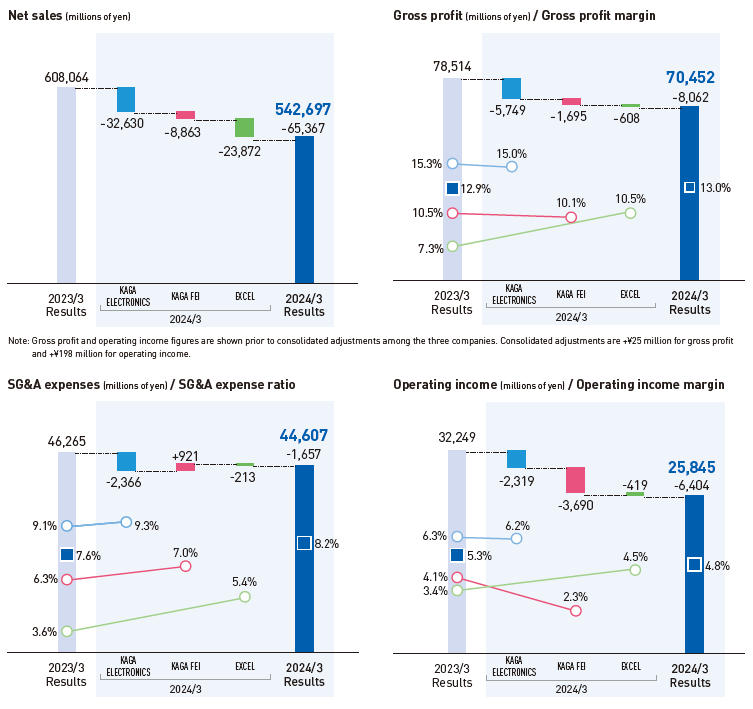
We consider inventory control to be one of the Company’s most important measures, so we keep a constant watch on its transition. Despite having risen to around ¥70.0 billion
over the course of the year due to inventory adjustments by major customers, inventories at March 31, 2024 were ¥54.7 billion, a year-on-year decrease of ¥1.4 billion, as a result of efforts to adjust purchasing and procurement. On the other hand, the inventory turnover period deteriorated by about 3 days to 36.8 days, due in part to the decline in net sales. We will therefore enhance and continue our inventory reduction efforts.
We also believe that our efforts to reduce inventories have helped us to maintain a high level of cash generation, with net cash provided by operating activities of ¥29,385 million and free cash flow of ¥26,417 million.
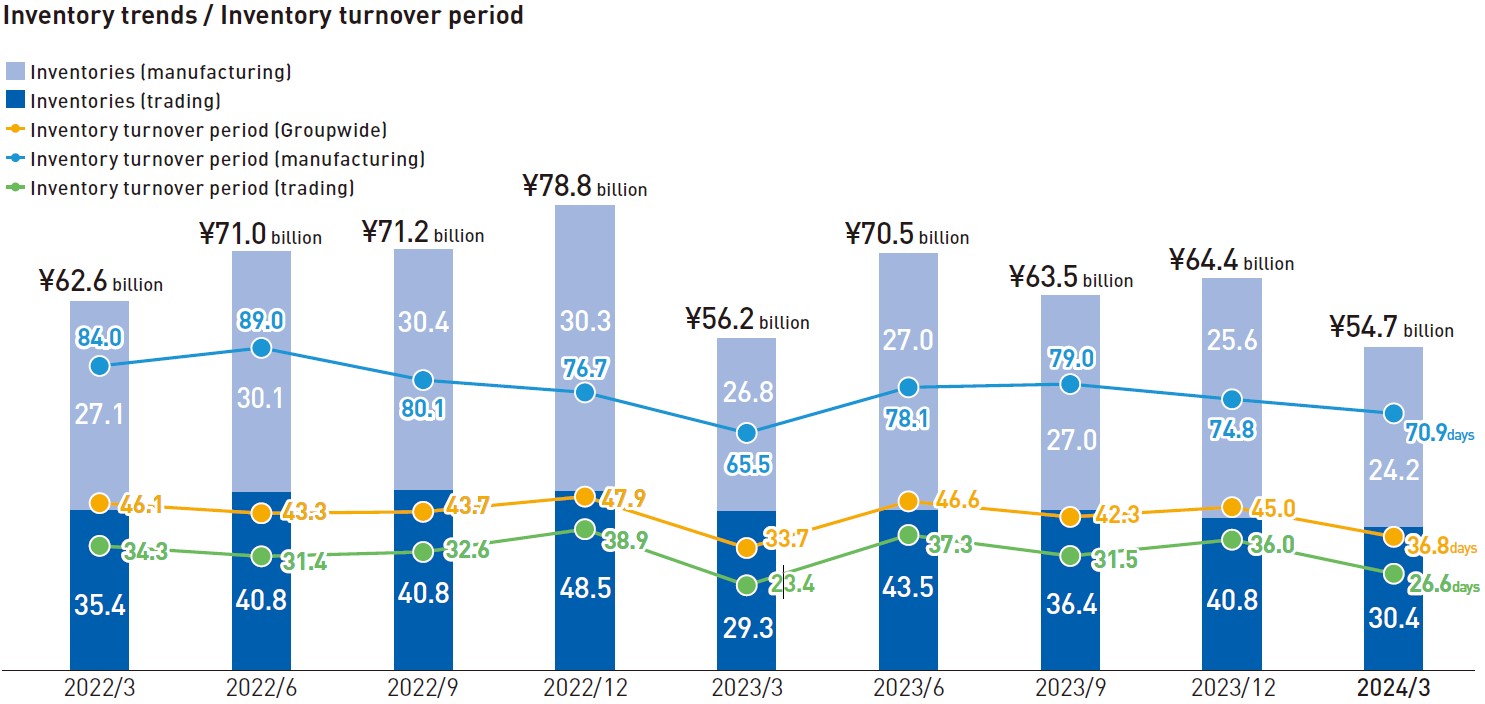
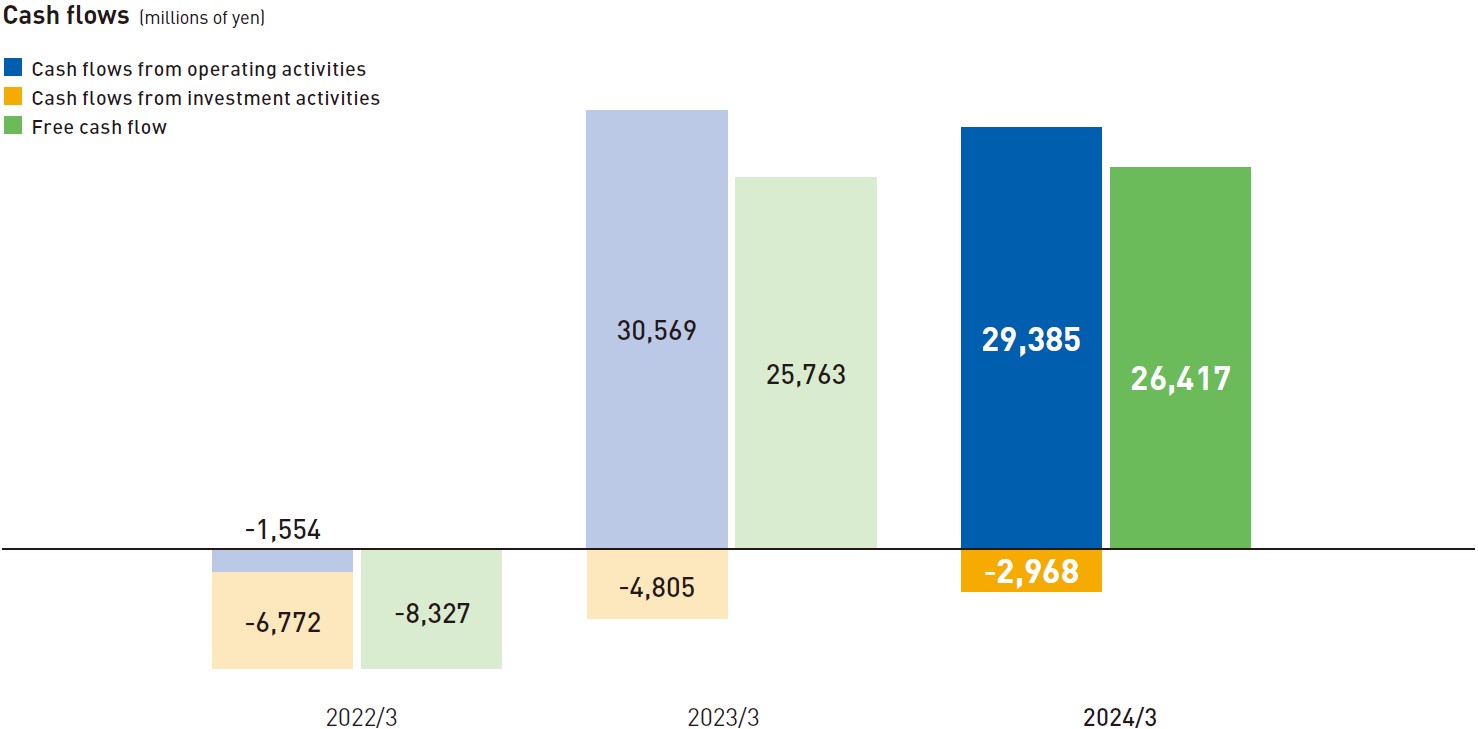
Interest-bearing debt decreased ¥7,668 million year on year to ¥34,270 million as a result of debt repayment using the cash generated by operations, and the D/E ratio was kept low at 0.23 times due in part to the buildup of shareholders’ equity through the acquisition of profits.
Cash and deposits increased ¥13,996 million year on year to ¥66,596 million, and the net D/E ratio remained negative at -0.21 times, continuing from the end of the previous fiscal year, as cash and deposits increased, further solidifying the stability and strength of the Company’s financial base.
While the rise in shareholders’ equity lifted the equity ratio to 52.6%, thereby increasing financial stability, ROE slipped to 14.5%, indicating a slight decline in capital efficiency.
The Company will continue to further enhance its earnings power and will leverage the funds it generates through investments in business expansion, including via M&A, investments in production facilities and other business infrastructure for growth, and human capital, while pursuing improvements in shareholder returns and other multifaceted initiatives, aiming to sustainably maintain and improve ROE to meet the management target of “10% or more on a stable basis.”
